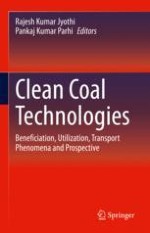2021 | OriginalPaper | Chapter
8. Environmental Benign Biochar Technologies: Strategic Utilization for CO2 Capture and Wastewater Treatment
Authors : Mohd Danish Khan, Ji Whan Ahn
Published in: Clean Coal Technologies
Publisher: Springer International Publishing
Activate our intelligent search to find suitable subject content or patents.
Select sections of text to find matching patents with Artificial Intelligence. powered by
Select sections of text to find additional relevant content using AI-assisted search. powered by
